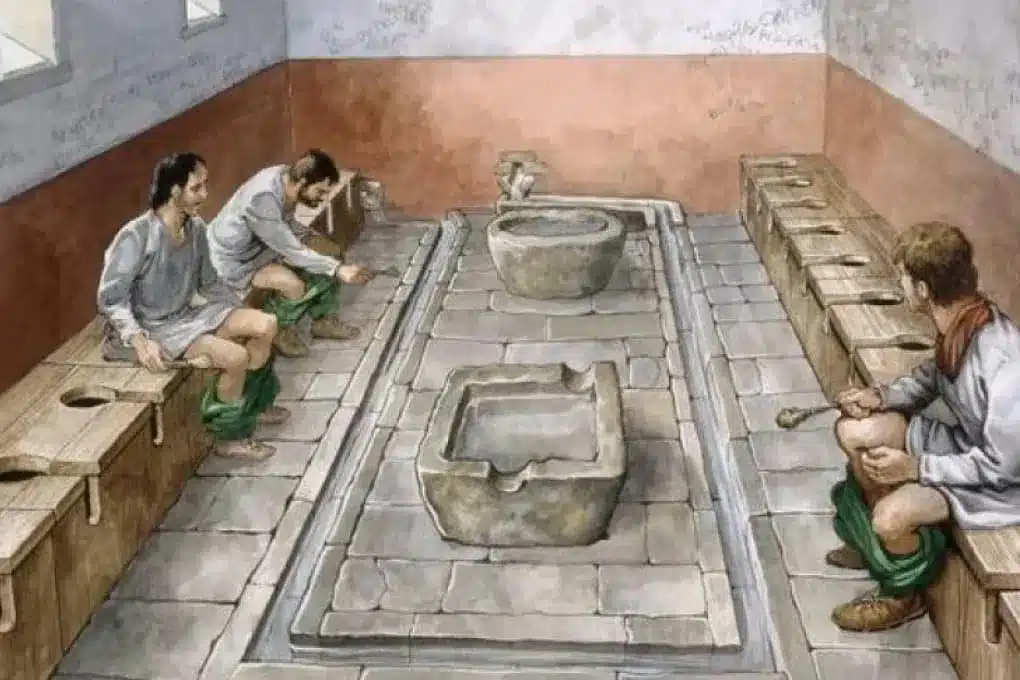Plumbing is an essential part of our daily lives, providing us with clean water and disposing of waste. But have you ever wondered when plumbing was first used and how it has evolved over time? In this article, we’ll take a historical journey through the origins of plumbing and explore some of the key innovations that have shaped the modern plumbing systems we know today.
The Early Days of Plumbing
Ancient Civilizations
The earliest known plumbing systems date back to ancient civilizations such as the Indus Valley Civilization, which existed around 3300 BC. These early plumbing systems were primarily used for irrigation and consisted of canals and ditches to transport water to crops.
The ancient Egyptians also had a sophisticated plumbing system, with evidence of copper pipes and drainage systems found in the pyramids and temples. They also used a form of indoor plumbing, with toilets that flushed into a sewer system.
Roman Empire
The Romans are often credited with being the first to develop a comprehensive plumbing system. They built aqueducts to transport water from distant sources to their cities, and they also had a complex network of pipes and sewers to supply water and remove waste.
The Romans also used lead pipes for their plumbing, which was a significant innovation at the time. However, it was later discovered that lead could be harmful to human health, and the use of lead pipes was eventually phased out.
Plumbing in the Middle Ages
After the fall of the Roman Empire, plumbing systems were not as advanced, and many of the innovations of the Romans were lost. During the Middle Ages, plumbing was primarily used for public baths and fountains, and indoor plumbing was limited to the wealthiest households.
The Rise of Cast Iron Pipes
One significant development in plumbing during the Middle Ages was the use of cast iron pipes. These pipes were stronger and more durable than the previous lead pipes, and they were used to transport water and sewage in cities.
The use of cast iron pipes continued to grow throughout the 18th and 19th centuries, and they are still used in some plumbing systems today.
Modern Plumbing Innovations
The Industrial Revolution
The Industrial Revolution brought about significant changes in plumbing technology. With the rise of factories and urbanization, there was a growing demand for clean water and efficient waste disposal.
One of the most significant innovations during this time was the invention of the flush toilet by Sir John Harington in 1596. However, it wasn’t until the 19th century that the flush toilet became widely used, thanks to the improvements made by Alexander Cummings and Thomas Crapper.
The Invention of the Water Pump
Before the invention of the water pump, water had to be carried from a source to where it was needed. The water pump, invented in the 18th century, allowed for water to be pumped directly into homes and buildings, making indoor plumbing more accessible.
The Introduction of Plastic Pipes
In the 20th century, plastic pipes were introduced, providing a more affordable and durable alternative to metal pipes. These pipes were also easier to install, making plumbing more accessible for homeowners.
Modern Plumbing Systems
Today, plumbing systems are more advanced than ever before, with a focus on efficiency and sustainability. Water-saving fixtures, such as low-flow toilets and showerheads, have become standard in many homes, helping to conserve water and reduce utility bills.
Plumbing systems have also become more complex, with the use of pumps, pressure regulators, and other technologies to ensure a steady supply of water and proper waste disposal.
The Future of Plumbing
As technology continues to advance, so will plumbing systems. Here are some potential innovations that could shape the future of plumbing.
Smart Plumbing Systems
Smart home technology has already made its way into the plumbing industry, with the introduction of smart water meters and leak detection systems. In the future, we may see more advanced smart plumbing systems that can monitor water usage, detect leaks, and even adjust water temperature and pressure.
Sustainable Plumbing Solutions
With a growing focus on sustainability, we can expect to see more eco-friendly plumbing solutions in the future. This could include the use of rainwater harvesting systems, greywater recycling, and more efficient water heaters.
3D Printing for Plumbing
The use of 3D printing technology is becoming more prevalent in various industries, and plumbing is no exception. In the future, we may see 3D printed plumbing components, making repairs and replacements more accessible and cost-effective.
Conclusion
From ancient civilizations to modern times, plumbing has come a long way. What started as a simple irrigation system has evolved into a complex network of pipes and fixtures that provide us with clean water and dispose of waste.
As technology continues to advance, we can expect to see even more innovations in the plumbing industry, making our lives more comfortable and sustainable. So the next time you turn on the tap or flush the toilet, take a moment to appreciate the long history and evolution of plumbing.






